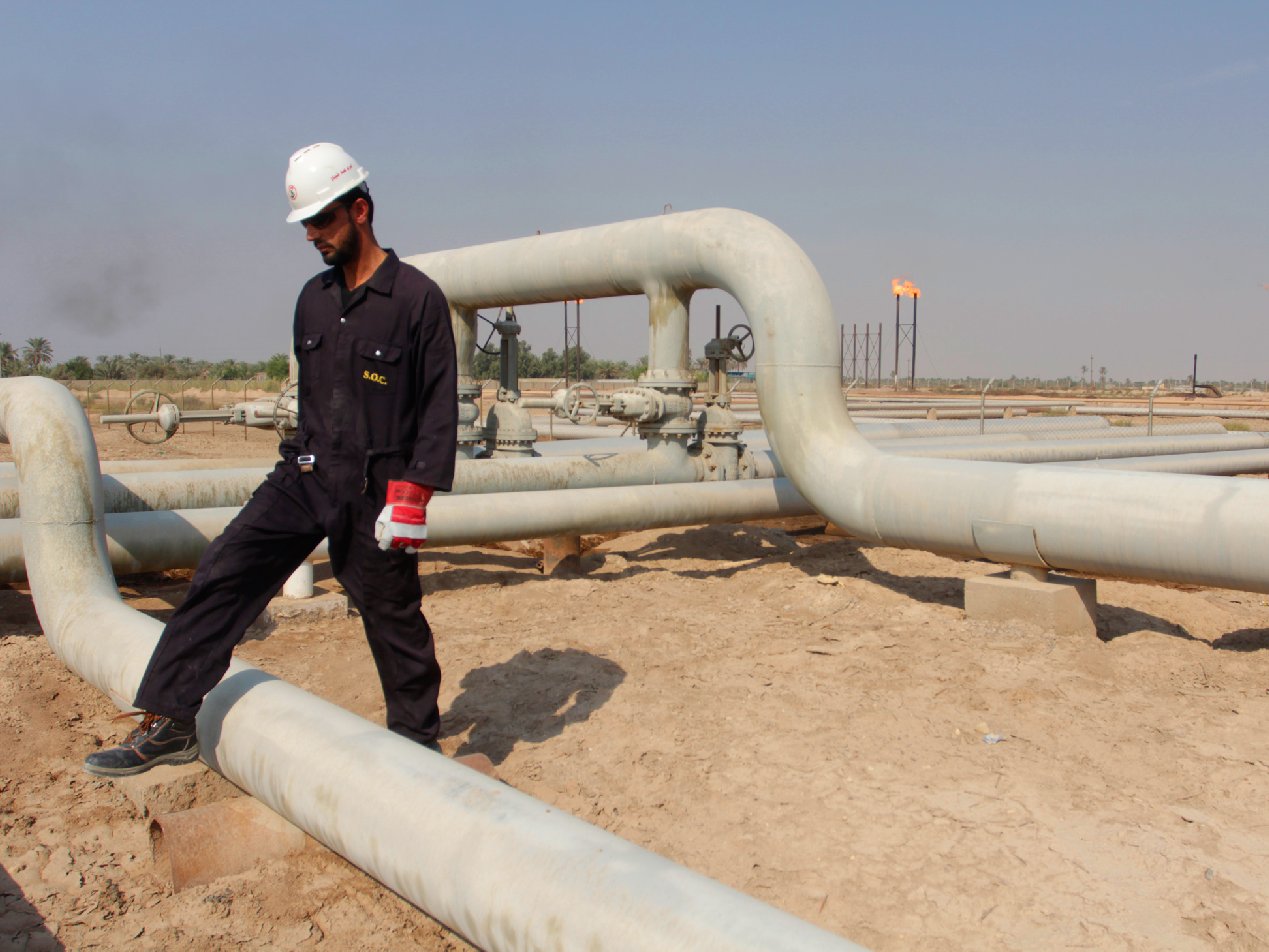 A worker walks at the Nahr Bin Umar field, north of Basra, southeast of Baghdad, November 16, 2014.REUTERS/Essam Al-Sudani
A worker walks at the Nahr Bin Umar field, north of Basra, southeast of Baghdad, November 16, 2014.REUTERS/Essam Al-Sudani
Iraq has been India’s largest supplier of crude oil for the last three months, shipping data from Bloomberg has revealed. This means that OPEC’s number-two has dethroned the cartel’s leader—Saudi Arabia—which has been the top supplier in the world’s fastest-growing market in terms of oil consumption.
Iraq produced almost a quarter of the oil India imported last month, or 23 percent, exporting at a daily rate of 1 million barrels. That is compared to a monthly average export market share of 19 percent for the prior four months.
Saudi Arabia, on the other hand, supplied 17 percent of the crude India bought in May.
Iraq has consistently shown signs of an expansion strategy for its oil industry, despite its participation in the OPEC agreement for oil output reduction. While Iraq has not been fully compliant to the production caps, Saudi Arabia has been over-compliant—a fact that contributed to Saudi Arabia losing coveted market share in India.
Regardless of the OPEC agreement, Iraq has been exporting crude oil at a breakneck pace, and in May, its crude oil exports hit the highest rate of the last six months at 101.13 million barrels, or an average 3.26 million bpd daily. India absorbed close to a third of that total.
But the flurry of crude oil leaving Iraq doesn’t stop there. Earlier this month, a deputy Iraqi oil minister told media that the Basra Oil Company is working on expanding the daily capacity of the Amaya oil export terminal in Basra to one million barrels. Amaya’s current capacity is 250,000 bpd. In addition, the minister, Karim Hattab, said that the Basra Oil Company will increase output from its Leheis oil field, one of the longest-producing in Iraq, to 120,000 bpd, an increase from its current output of 100,000 bpd.
In its latest Oil Market Report, the International Energy Agency noted that Iraq has managed only a 55-percent compliance rate with the OPEC output reduction agreement, which required that it shave 210,000 barrels from its daily production. The failure of Iraq to adhere to the agreement set out in November and extended in May did not come as a huge surprise, given Iraq’s overwhelming dependence on oil revenues.
As for Saudi Arabia, which according to OPEC figures is adhering to the agreement whole heartedly, there are additional reasons why it is losing its top spot as oil supplier to the world’s next economic hothouse to its rogue OPEC partner-slash-competitor: energy industry insiders from India told Bloomberg that local Indian refineries have been undergoing upgrades that now allow them to process crude oil with higher sulfur content, such as Iraqi crude. Prices for Iraqi crude are also attractive, according to one of these insiders, the chairman of Hindustan Petroleum Corp.
India is not the only promising destination for Iraqi oil. Tanker tracking data suggests that Iraq is also exporting more oil to the United States—again besting Saudi Arabia, which pledged to cut exports to its North American client to draw down crude oil inventories in the United States.
According to data compiled by Bloomberg, Iraq loaded 12 million barrels of crude to be shipped to the U.S. in just the first 13 days of June. This is twice as much as what Iraq shipped to the world’s number-two consumer during the comparable periods of April and May.
Iraq’s focus on India appears logical, even though India has ambitious renewable energy plans aimed at reducing pollution levels and its dependence on oil imports. India is so ambitious, in fact, that it has plans to ban the sales of non-electric cars after 2030. While this will certainly reduce its oil demand, it won’t eliminate it. As the country’s oil minister told the FT, “Oil will remain an important component of our energy usage but our capital expenditure is moving into alternatives — gas, renewables and technologies such as electric cars.”
As oil prices continue to dip and high crude oil inventories linger, competition among foreign suppliers will only intensify.
Get the latest Oil WTI price here.
NOW WATCH: Former Navy SEAL commanders explain why they still wake up at 4:30 a.m. — and why you should, too













